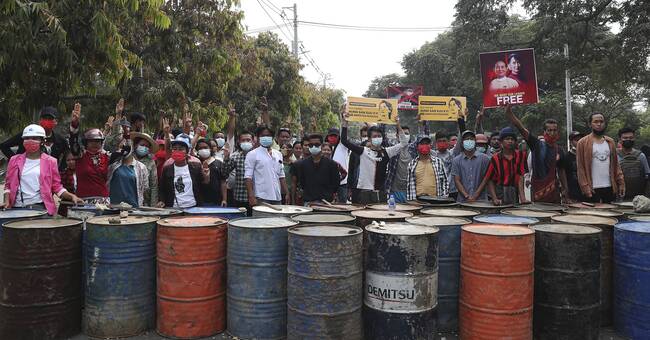Violence escalated when security forces stormed a shipyard on Saturday.
Hundreds of people had gathered there to prevent the police from arresting people who had taken part in the protests.
- Six men with gunshot wounds were brought to us.
Two are seriously injured, medical staff told AFP.
The news agency updated a moment later that two people had died.
On Friday, a woman died of head injuries from a rubber bullet during protests in the capital Naypyidaw on February 9.
All over the country
During the riots in Mandalay, police also used rubber bullets and water cannons against the protesters.
It is also said to have been shot sharply in connection with protests in Naypyidaw.
There are no signs that the protests are slowing down.
The unrest picked up speed after the military coup on 1 February.
The military also put the popular Aung San Suu Kyi under house arrest in the country.
Since then, large-scale demonstrations, with hundreds of thousands of people in the streets, have taken place around the country.
Many hundreds have been arrested, among them government employees who have joined a disobedience campaign.
Minorities on the march
Representatives of the country's minorities are now also visible among the protesters.
During Saturday's protest march in Myanmar's largest city, Rangoon (Yangon), colorful folk costumes shone.
- The military rules with the regulations that divide the ethnic groups.
We can not let that happen again, says Naw Eh Htoo Haw from the ethnic group Karen.
Aung San Suu Kyi, like the military, belongs to the Burmese majority.
Her government sparked an international storm of protest for failing to act on the military's 2017 violence campaign against the Muslim minority Rohingya, who have forced more than 700,000 Rohingya to flee.

